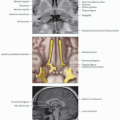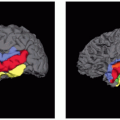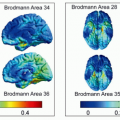Cases
Lubdha M. Shah, MD
CASE 1
Right Parietal Opercular Cavernous Malformation (CM)
Tongue-tapping task demonstrates that lateral primary motor cortex abuts CM and may be vulnerable to injury during surgical resection
Language tasks, including word generation and passive listening, confirm left dominant language
As CM lies in contralateral hemisphere to dominant language areas, little risk of language pathway disruption
CASE 2
Primary Motor Cortex Relative to Intraaxial Lesion
Case 2A: Intraaxial lesion in left superior parietal lobe involves left postcentral gyrus and abuts precentral gyrus
Right thumb-tapping task confirms primary motor cortex immediately adjacent to anterior margin of lesion; helps in planning surgical approach
Case 2B: Oligodendroglioma in left superior frontal gyrus extends posteriorly to expected region of primary motor cortex
Right foot-flexing task demonstrates activation in parasagittal right foot motor area, which abuts posterior margin of lesion
Supplementary motor area (SMA) touches medial aspect of lesion
Injury to SMA may result in postop motor deficit, which often improves or resolves
CASE 3
Extensive Right Temporoparietal Glioblastoma Multiforme
MPRAGE images with DTI color fractional anisotropy data overlay demonstrate medial deviation of corticospinal tracts and superior longitudinal fasciculus
fMRI shows anterior displacement of tongue motor area
Language tasks confirm left-dominant language areas
CASE 4
Language Involvement by Left Insular Mass: Crossed Dominance
Slow-growing lesions involving classic language areas may result in crossed dominance
Dominant right-expressive speech with small left-expressive speech component
Dominant left-receptive speech in posterior superior temporal gyrus within 1 cm of posterior margin of lesion
Lesion likely involves arcuate fasciculus
Subtotal surgical resection to preserve speech
CASE 5
Atypical Language
May be cortical reorganization due to encephalomalacia, infarction, tumor, vascular malformation
Atypical/right hemisphere language dominance in early cortical injury during language formative period
Language laterality may be split
Studies show cortical reorganization patterns and functional recovery after stroke affected by corticospinal tracts, brainstem pathways, and interhemispheric connections
CASE 6
Case-Specific Language Paradigms
Case 6A: Language activation can be elicited using American Sign Language via video
Case 6B: Language tasks can be administered in a subject’s native language &/or in English if the subject is fluent
CASE 7
Decreased Visual Cortical Activation
Different visual tasks can be used to define retinotopic map for subject
Presurgical visual field mapping for occipital lobe lesions
Confirming visual field defects from retinal or optic pathway lesions
CASE 8
Mapping of Semantic Memory Regions
Activation in bilateral hippocampus and parahippocampal gyri
Typically bilateral activation that does not predict memory impairment after hippocampal resection
Wada correlation may be helpful
CASE 9
Intraparietal Sulci and Frontal Eye Fields
fMRI paradigms include following cursor, complex patterns, arithmetic problems
Activates attention control network
Presurgical mapping of frontal eye fields for superior frontal lobe lesions
Deficits improve over weeks after injury, but can have permanent injury to saccadic eye movements
CASE 10
Arteriovenous Malformation (AVM)
Cortical reorganization with AVM overlying eloquent areas suggests that AVM resection may be possible with acceptable facial motor neurological deficits
CASE 11
AVM-Neurovascular Uncoupling
Presence of AVM alters cerebrovasculature
BOLD signal may be diminished due to vascular steal
Lesion-induced neurovascular uncoupling may cause reduced fMRI signal in perilesional eloquent cortex
May have normal or increased activity in homologous brain regions, which may simulate hemispheric dominance and lesion-induced homotopic cortical reorganization
Stay updated, free articles. Join our Telegram channel

Full access? Get Clinical Tree





